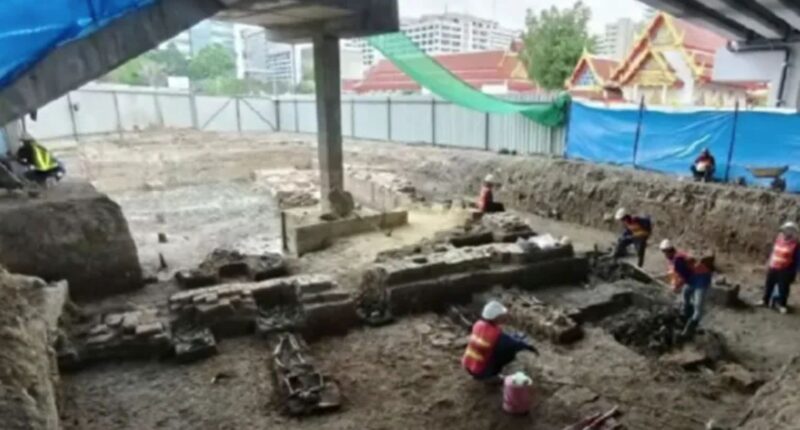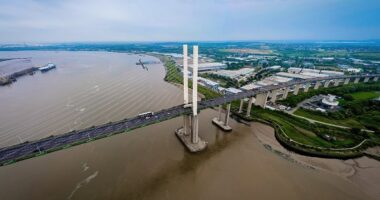CONSTRUCTION workers got a shock when they started pulling body parts from the ground – and realised they had stumbled across a mass grave.
The site was littered with skeletons that had been bound and shackled, leading experts to believe they were mass execution victims.

Workers were digging a site near Siriraj Hospital in Thailand’s capital, Bangkok.
They were surveying the site before it is transformed into a train station.
When they came to excavating beneath Arun Amarin Bridge, the grim artefacts began to emerge.
Over 70 skeletons have been unearthed so far, according to the Mass Rapid Transit Authority of Thailand (MRTA).
And the gruesome trove has sparked major interest amongst archaeologists, historians and the public.
A representative from MRTA mentioned, “The bodies were discovered in peculiar positions, with numerous skeletons showing signs of being tied at the wrists and ankles. This implies they might have been collectively executed.”
The dozens of dead are believed to have been executed over two hundred years ago.
Many of the bodies were found face-down with their limbs tied up.
This suggests they died as prisoners, or were political enemies slaughtered without ceremony.
It remains unclear exactly who the dead were in life – whether soldiers, civilians or slaves.
Specialists from the Fine Arts Department, responsible for overseeing the inquiry, speculate that the bones might be linked to the Thonburi era spanning from 1767 to 1782.
This was a turbulent era following the fall of the Ayutthaya Kingdom.
The time was punctuated by military clashes and brutal purges, which could explain the brutal mass murder.
A Fine Arts Department official said: “This could be one of the most significant archaeological finds in recent Bangkok history.

“If confirmed, it may offer a rare glimpse into the darker side of the Thonburi era.”
Investigations are ongoing to determine exactly when the group died, and whether the site was a formal burial ground or a make-shift mass grave.
The group is aiming to establish through scientific examination whether the bodies existed before the established establishment of Bangkok in 1782 – under the governance of King Rama I.
A cordon protects the morbid site as work for the MRT Orange Line railway continues around it.
Officials have reassured the public that the construction work will tread carefully, in order to preserve anything of cultural significance.
Many are calling for the bones to be preserved and displayed, to remember that chapter of Bangkok’s history.




![Anne Burrell: Food Network Chef Found Dead Near Dozens of Pills [Report]](https://bbcgossip.com/wp-content/uploads/2025/06/Anne-Burrell-Food-Network-Chef-Found-Dead-Near-Dozens-of-380x200.jpg)












